There are many mysterious techniques used in the world of bonsai tree creation and maintenance. In my experience, many of them are misunderstood and therefore incorrectly applied. In my own case it certainly took a long time to understand what defoliation of deciduous trees was all about. Over the last few years we have been so busy it’s been hard to find time for elective techniques. Thankfully life has settled down a bit of late and I’m back on the tools so here’s Defoliation – What You Need To Know.
Defoliation is the act of removing leaves from a tree. In this context we are considering the near total removal of leaves from a broadleaf tree as opposed to partial defoliation that is a technique used to balance vigour. Back in the mists of time I was under the impression that defoliation was a method of achieving smaller leaves (which ultimately it is). That’s what I was told and also what I read. However I was also told all I had to do was cut the leaves off in early summer. Like most everything in life it’s much more involved than that.
So, here’s what I have picked up along the way…..
Defoliation is a three stage technique that is employed to increase the ramification of broadleaf bonsai trees.
Defoliation is a technique that is performed during the peak growing period of summer. In the UK that is typically from late May to early July depending upon local conditions and the unpredictable weather.
Defoliation is a technique that is used in the later stages of bonsai tree development and for refinement and long term maintenance of fully mature bonsai trees.
Just cutting leaves off your tree might well be the definition of the term but it is certainly not the correct application of the whole technique and will return little benefit. I tried this in my early days because those around me said it was what you did to get small leaves. However, in practice I found that when the leaves returned they were much the same as those that came before. Perhaps my, largely, untrained trees were too healthy or too raw to benefit. I was also told that defoliation would weaken my trees if performed too often.
After a couple of years I largely abandoned the whole affair consigning the idea to the bin of spuriousness. Following that, about ten summers came to pass and I found myself extremely unhappy with my ability to build ramification (a subdivision of a complex structure – fine twigging in this case) and refine my broadleaf trees and so began to revisit defoliation.
For a while I reclined upon the old excuse that the British Isles do not have the most suitable climate and so we cannot do what some other folk can with bonsai. That’s largely bullshit, it has since become obvious to me that we need to develop and refine our own techniques to work here. Back in the day it was largely a case of copying what the Japanese were doing and when that didn’t work very well we just blamed the weather and gave up. Lazy bastards!
Creating bonsai trees is all about helping a plant to become EXACTLY what it would in the wild. A mature example in perfect balance with its surroundings and an integral part of the world. We just want that to happen within the confines of a small stature.
A young tree typically grows with great enthusiasm and abandon. It’s little and in ideal conditions has more than enough of everything it needs and grows accordingly. Later on resources are less abundant to the now much larger tree and so growth becomes more refined. This tree will grow what it needs, shed what it does not and makes efficient use of what it has available. That’s how our bonsai should be.
Here is an explanation I have recounted literally thousands of times before. It’s simplistic but true and proven….
If a tree of a given size requires ten square inches (64.5 square cm) of leaf surface to photosynthesis the energy it needs and it only has a couple of buds it’s going to make two really big leaves. If we increase the number of buds tenfold the leaves will inevitably be much smaller. Ultimately the more buds (growing points) the smaller the leaves, or needles. Anyone who has reduced a wild tree for bonsai by chopping it right down to a nub will have seen how this works over a few years, see my elm below.
It’s possible to get small leaves or needles by restricting a trees ability to grow them. This involves withholding resources like water or nutrients etc. I have seen some dastardly devices employed upon this endeavour. Every time the net result is stress for the tree. If a tree needs big leaves it should be allowed to grow them. Small foliage is the result of good quality technique applied over time in a skilled manner. Choking the living shit out of your tree just to please your warped sense of aesthetics is not only stupid but risky and disrespectful. Us old guys can spot the ‘smoke and mirrors’ every time.
Before we employ defoliation it’s important to determine if it’s right for our particular tree and if it’s the correct time. You tree needs to be healthy. It needs to be holding good viable leaf late into the autumn, it needs to be sucking water out of it’s pot vigorously every day it’s in leaf and it needs to be creating back buds all on it’s own. No back buds no bueno. Go back to the start and restore your trees health.
The structure of a typical broadleaf tree consists of what are known as branch orders. Primary branching (1st order, the first thick bits), secondary (2nd order) and tertiary branching (3rd order). That’s a minimum of three zones of decreasing size and increasing twig density. These orders can extend well out into double figures. For our purposes three orders are pretty much a minimum. Our ramification is built on the ends of these branches. If you do not have this level of structure your tree is NOT ready for the application of defoliation. Please excuse the puerile graphic…..
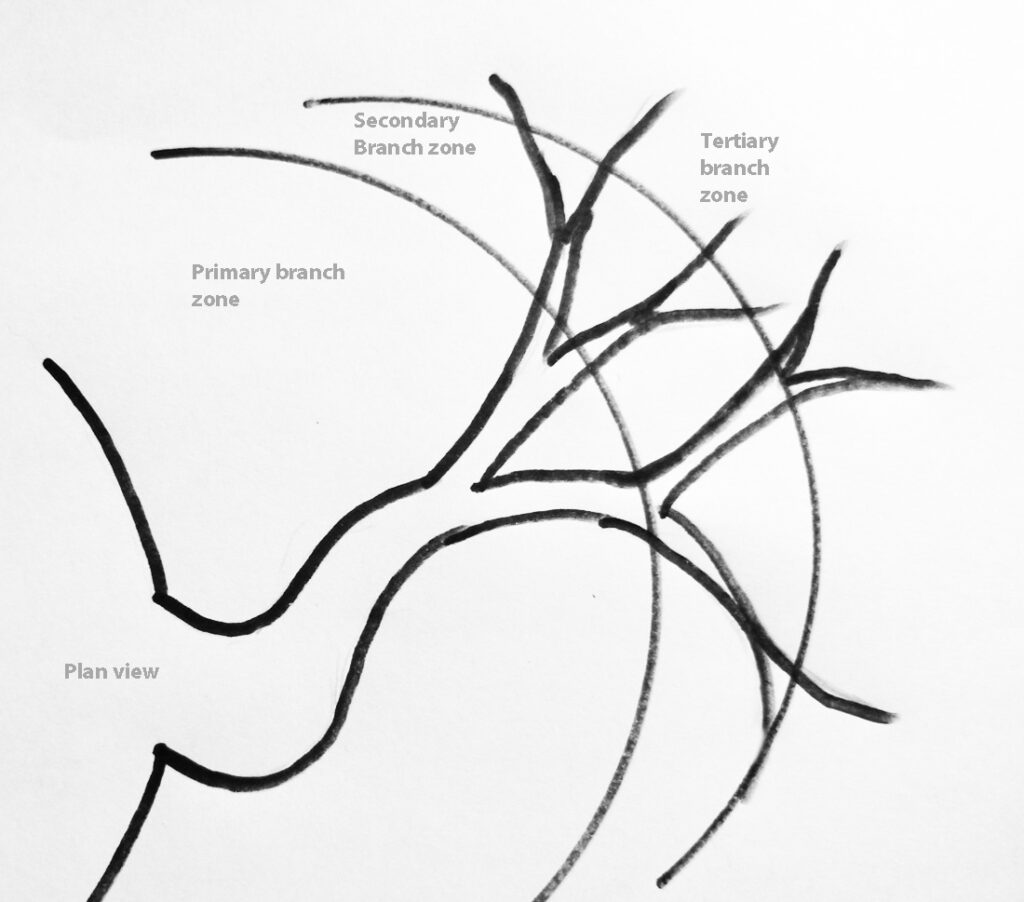
A tree developed sufficiently for defoliation to be of benefit should have it’s new growth stopped early on in the season. Typically new soft extending tips are pinched out. Stronger parts of the tree are stopped at the first pair of true leaves, weaker parts should be allowed to develop a few extra leaves before they are pinched which helps to balance the trees energy.
Next some careful observation will be required. Allow the leaves to fully form and harden. Progressively stop any emerging shoots as above. There comes a point where growth seems to stall. Leaves will be fully mature and hardened off and there will be a period of stasis. This is a stage when leaves are feeding the tree and replacing the energy it took to produce them, it’s important. Eventually movement will be seen as a second bud break begins and that’s when we need to jump in. With experience and an eye on the weather it becomes possible to pre-empt this moment by a few days and that’s the ultimate.
Defoliation: Stage 1
This is pretty simple, cut the leaves off. Simply sever the supporting stem (petiole) with sharp scissors. The remaining stem will dry out and drop off in a week or so. Most varieties will suffer if leaves are pulled off as this will, remove some axillary buds and can even pull tiny strips of bark off some species. In this context removing part of the leaf is not going to work, remove the lot. Working on a tree like elm the tiny round primary leaves on the current seasons extension can be ignored if they are too small to cut.
Start at the top and work down. It’s possible to leave a few leaves if parts of your tree are very weak. Small inner or lower branches may qualify but in general if you are doing this then do it. Half measures will produce poor subsequent results.
Defoliation: Stage 2
Once the leaves are gone it’s time to prune the new growth in order to integrate it into the rest of the trees structure and do your bud selection. This is much the same as you would be doing in autumn or just before spring flush. A simple rule is pruning to two. Three shoots from a single point cause thickening that will become ugly with time. There is no point developing ramification unless it’s structure is correct or it will have to be removed later on. Remember branch orders, one becomes two, becomes four, becomes eight, becomes sixteen. That’s how to build ramification.
Once pruning and bud selection are complete it’s time to break out the wire. At this moment most broadleaves are like putty to bend and will fix in position within as little as two or three weeks. Where it’s required I take opportunity to lay in new growth and correct errant branches that are getting out of place. Use the opportunity to open up spaces to let light into inner structure. This is the moment that really BUILDS a broadleaf tree and ultimately produces genuine quality. Stage 2 is vital!
After this work is complete I like to leave the tree in the greenhouse for at least a week. The added warmth really helps bring on the new flush of foliage. As soon as I see the fat new buds about to open the tree goes back outside into it’s normal spot.
Defoliation: Stage 3
Once our tree flushes new growth I like to let it extend a little. For a mature tree typically 3/4 leaves, more in weaker areas before nipping out the ends. This typically takes a month from leaf removal assuming decent warm weather. I like to let the leaves mature, they are feeding the tree in the strong sunshine we get so little of in Blighty. Typically six to eight weeks after cutting the leaves (normally August) I will reduce the new extensions to one or two nodes whilst also removing a good percentage of larger and low hanging leaves. This opens up the trees structure and lets light inside. Now is also the time to remove that wire. Assuming it was applied correctly the shapes it was holding will be perfectly set. From here on out until leaf fall make sure you have a good fertiliser regimen and plenty of sun. That will ensure a good season next year.
This last stage is a little different from what might normally be described and is a modification required because of our weather. If you are entirely growing inside then pruning can happen earlier, as can later growth flushes. On average GB gets a fraction of the sun some other places do and we need to utilise every single moment to our advantage if we are going to produce decent bonsai trees.
Who said there was noting to do with mature bonsai trees? That’s a lot of work. But, keep that tree healthy and keep this up for two or three years and the results will be astounding. Bonsai is NOT about what we CUT OFF, it’s about what we grow, it’s about what we ADD to a tree. This defoliation technique works wonders.
Some trees do not take well to cultivation in a small pot. For instance I have a very stout little English elm (ulmus procera). Every year it enthusiastically bursts into life full of the joys of spring. I cut back the new shoots after which LITERALLY nothing happens for the rest of the year and the tree typically starts to drop leaves at the end of September.
In this case defoliation in June results in a powerful new flush within a few days. The new flush is strong with powerful extension and good colour alongside some good back budding. The new leaf stays strong and vibrant until it gets significantly cold which in my part of the world is late into November. That is several weeks later than without defoliation which means more photosynthesis and a stronger tree overall. I have seen this happen so many times with different species now. It rather de-bunks the notion that defoliation weakens a tree. Done correctly the opposite is actually true.
Below I have included images of an evergreen oak, quercus ilex. These trees are the ultimate lightweights. This one spends winter in the greenhouse so by spring it’s leaves are in very good condition. Therefore it will not bother making any new ones. In the past it has gone an entire summer without making a single new leaf.
I was scratching my arse wondering how on earth I could develop this as bonsai if it was not going to grow. The answer of course was defoliation. I now cut it’s leaves away in May and the subsequent flush comes in a just a few days of good weather and it’s incredible. 75% of the ramification you can see on this tree has been produced in a single growing season. In fact a lot of Mediterranean broadleaf evergreens are the same. See the pistacia below. Again that ramification has all happened in a single season.
Defoliation works wonders for some more difficult subjects used for bonsai. Acer campestris is a strong tree that grows fantastically here. However I can count on my thumbs the good quality examples I have seen well developed in the last thirty years. The solution is a double defoliation about four weeks after first leaf flush and again just before the height of summer. The bud selection and wiring stages are vitally important. This works a treat with big leaf maples like sycamore (acer pseudoplatanus) too.
Defoliation is not right for every species. In my own experience Hawthorn, Chinese elm, beech, deciduous oaks and a great many small leaf shrubs will return poor results. Even privet will only produce marginal improvements in our mediocre weather. Many varieties require a modified technique to return their best. If in doubt, so long as your tree is strong, give it a go and monitor the results over the following winter.
One note of caution. This has a lot to do with the weather over here. A few years back I had a spectacular native hornbeam booked for a show in September. So, a little later than I hoped I removed all the slightly scruffy leaves. The expectation was to rock up at the show with pristine shiny bright leaves, not so easy on a native hornbeam that late in the season. I did all of the above and then in August the wind turned to the northeast, not good on the east coast. Temperatures for the whole month hovered around low double figures. The result? Not a single leaf grew until the following spring. Showing a tree with no leaves in September makes you look like a rank amateur so it never went along. The moral? Watch the weather and choose your time wisely!
In effect defoliation gives us a whole additional cycle of autumn, a winter rest and a spring flush. That can, with the application of some skill and sensitivity give us two years development in just one. It exploits the natural growth phases of a tree without hurting it, in fact it makes for a stronger happier tree when used wisely.
Ultimately it is exactly as I was told, defoliation produces smaller leaves. Of course it’s possible to entirely ignore the above and just get rid of the leaves and, if you are lucky they will come back smaller but this just might be the result of stress having depleted the plants energy levels. However as with all things in life there is more to it than meets the eye.
Contrary to my earlier thoughts defoliation is NOT an elective process you can use or not. It’s THE fundamental work involved in creating a bonsai tree with broadleaf species. If you are not doing this you are not creating a bonsai tree you are doing topiary. It entirely explains why we see SO many poorly developed broadleaf trees like maples, oaks and elms. Many folk are too bone idle to do the work. Isn’t that like being a footballer who never plays the game? Where I come from that guy’s a bullshitter and, in the words of Forrest Gump “That’s about all I got to say bout that.”
G.
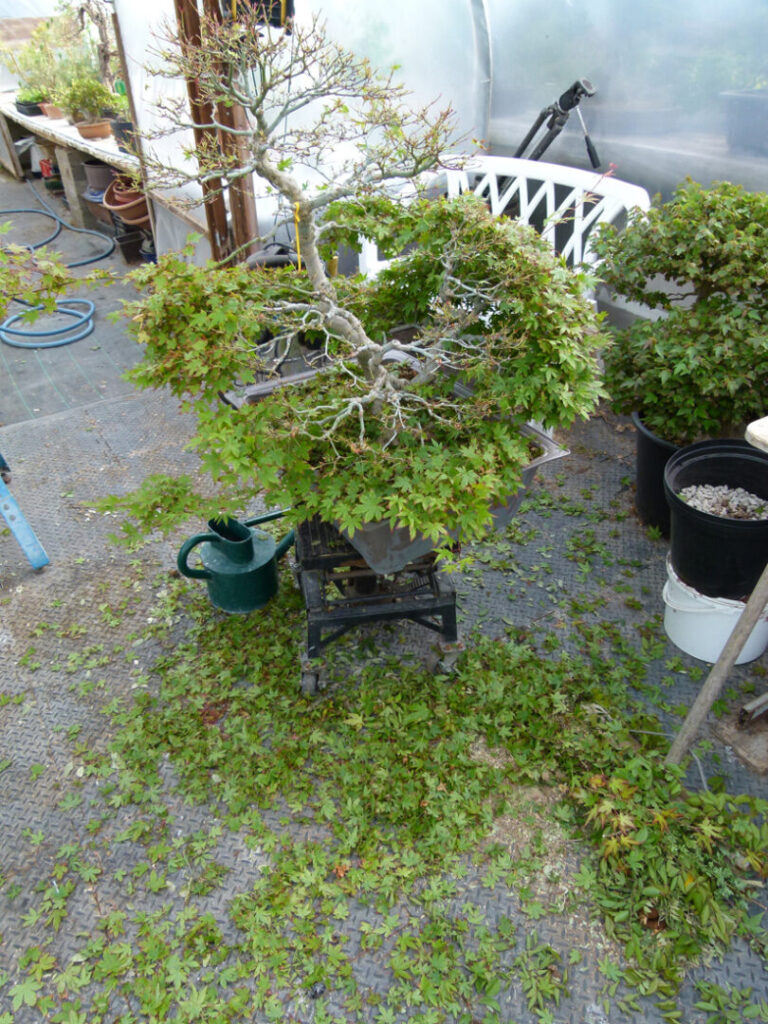
Defoliation – What You Need To Know. It involves cutting off a LOT of leaves
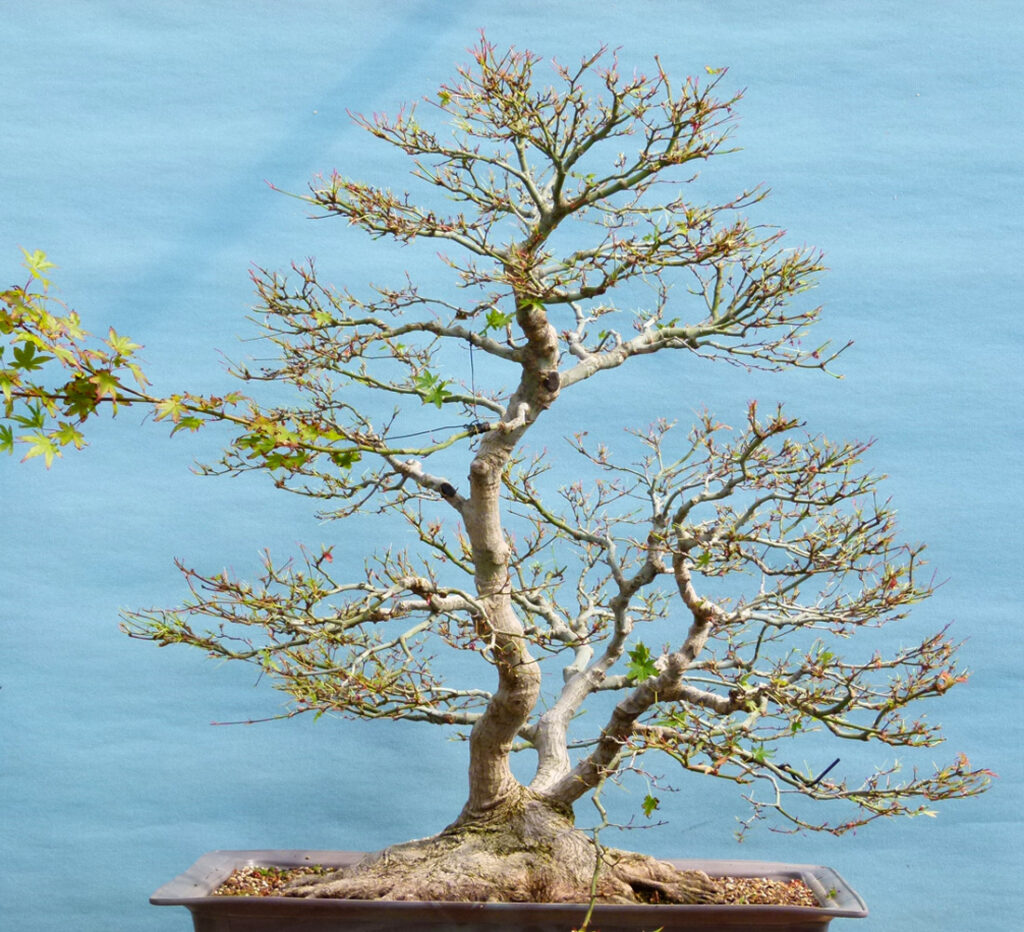
Defoliation – What You Need To Know. Japanese maple upon completion.
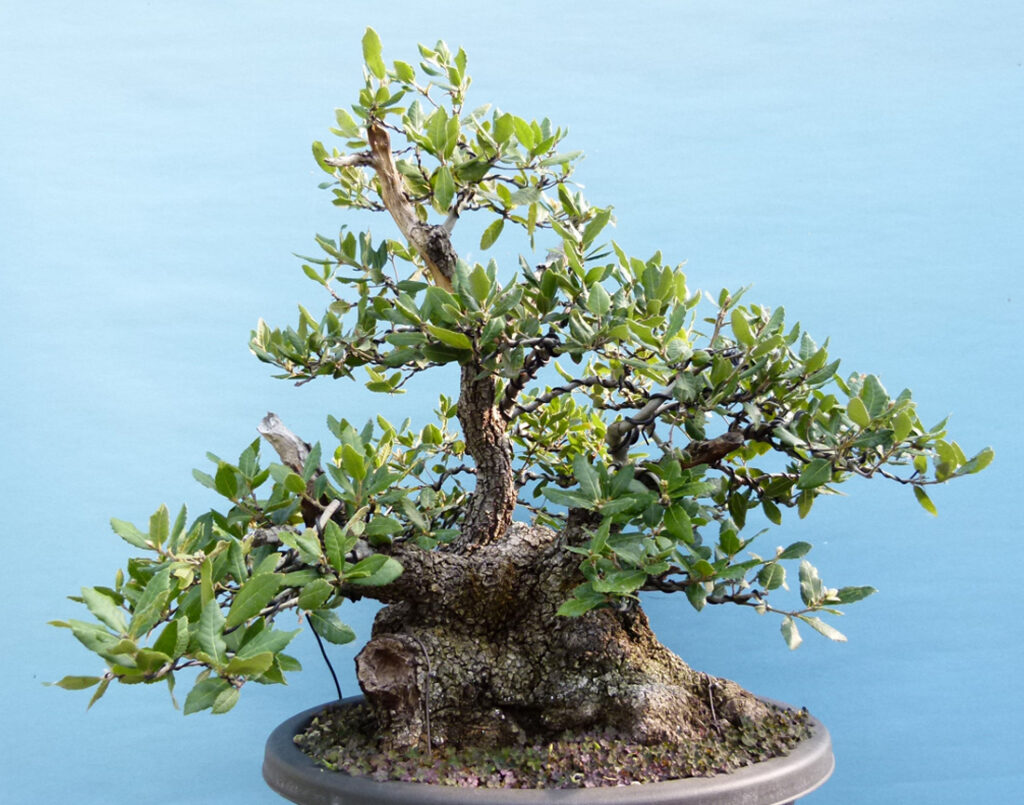
Defoliation – What You Need To Know. Holm oak prior to leaf removal.
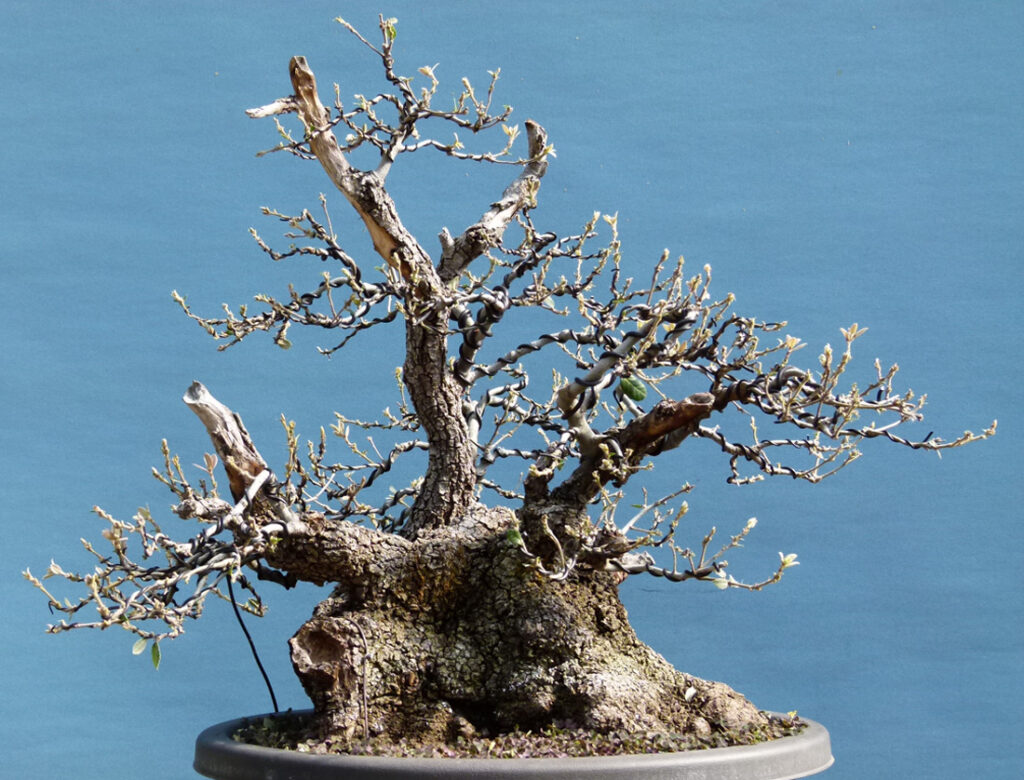
Defoliation – What You Need To Know. New leaves just beginning to show.
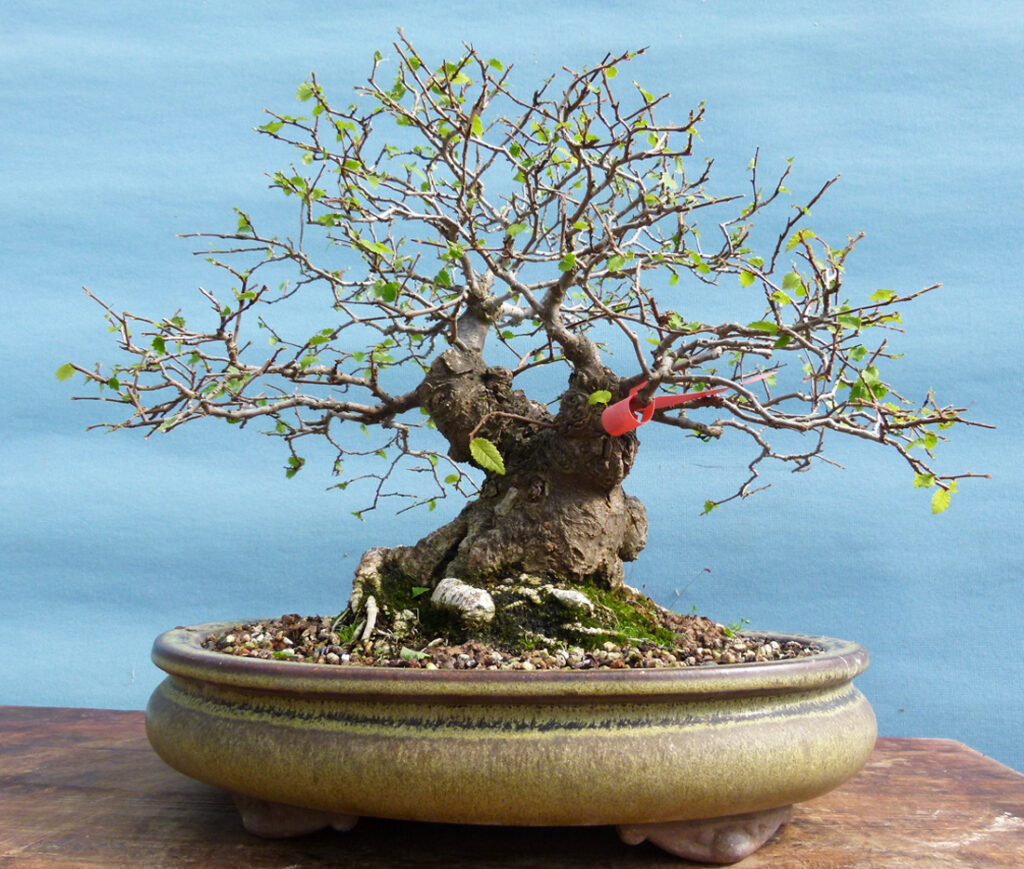
Defoliation – What You Need To Know. My reticent little elm after leaf removal.
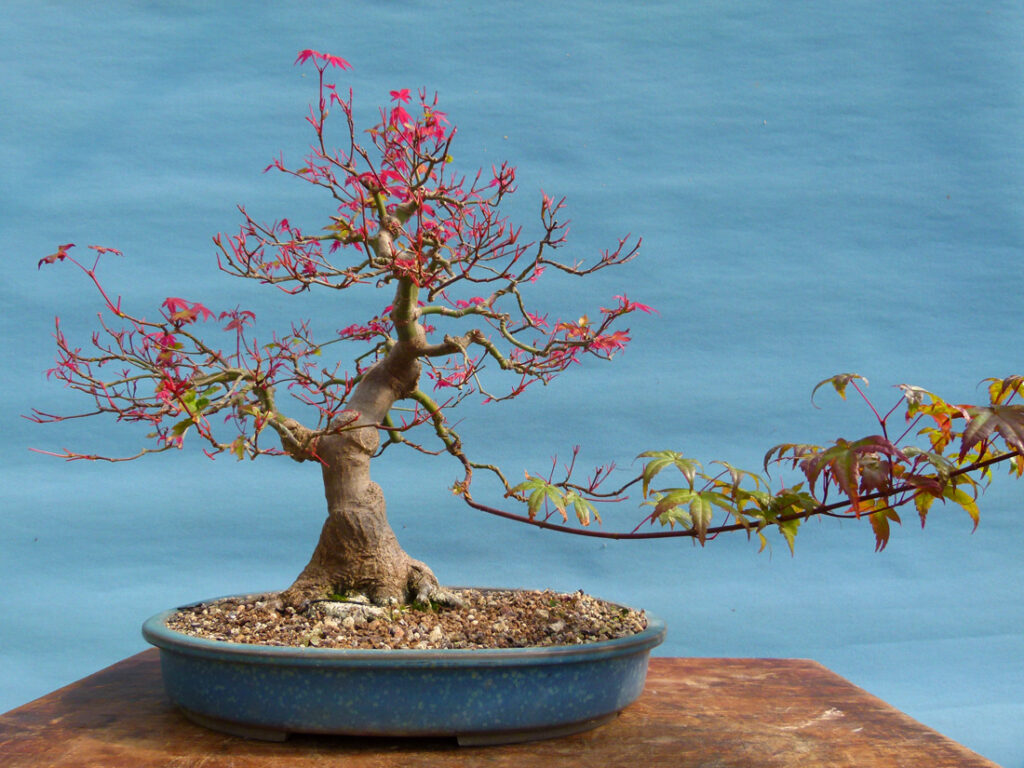
Defoliation – What You Need To Know. Early days and first defoliation for this little deshojo.
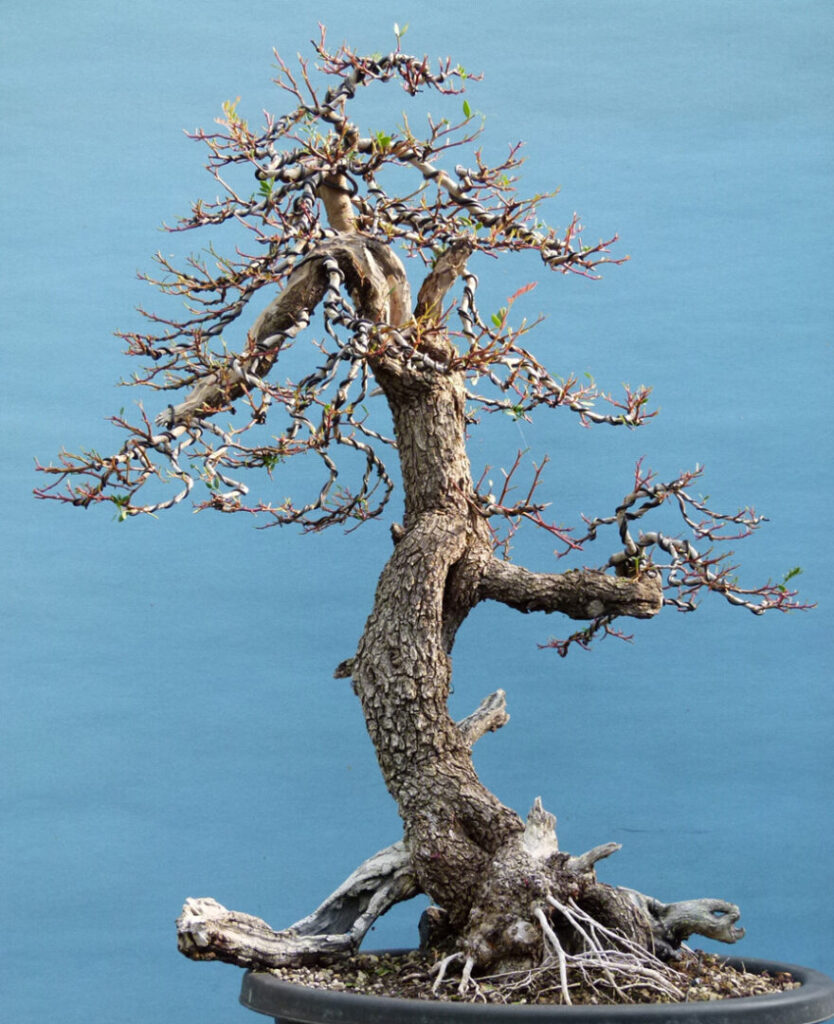
Defoliation – What You Need To Know. Pistacia defoliated for the second year.
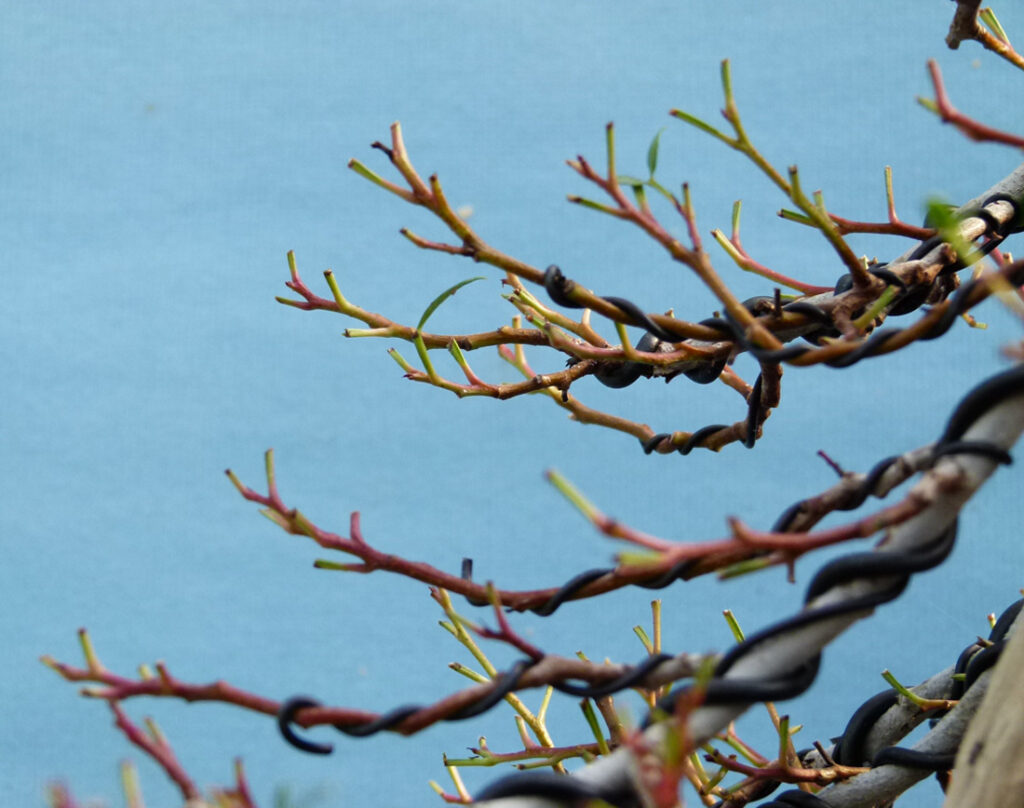
Two branches enter this image from the right. All this ramification developed in a single season.
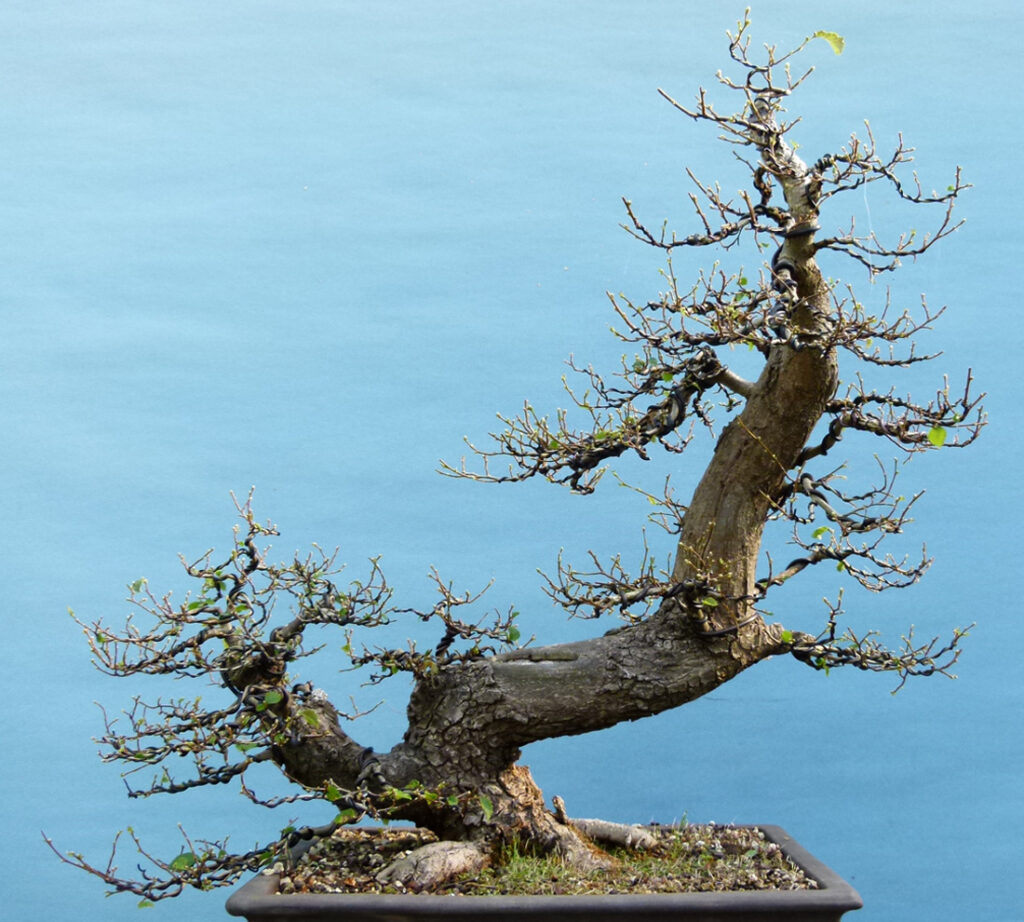
English elm after 4 growing seasons from a chopped down totally bare trunk.
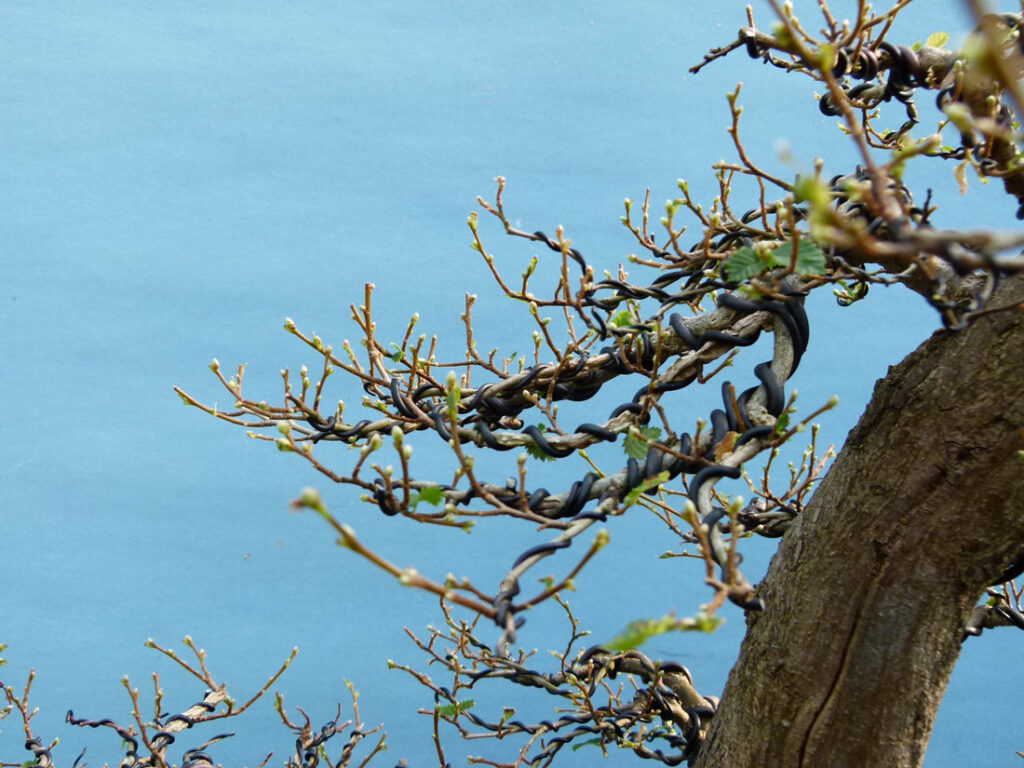
Second season of defoliation and ramification building. New buds opening a week after leaf removal.

I’ve been doing bonsai for over 40 years, including a fair bit of defoliation – though perhaps not enough it seems! This is by far the best and most interesting explanation of defoliation that I have ever read. Brilliant!